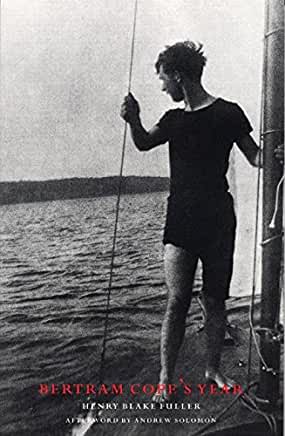IN A SPECIAL ISSUE of this magazine, dated November–December 2014, eight novels were nominated for the distinction of being the “first gay novel.” Many of the usual suspects were on the list (The Picture of Dorian Gray, Maurice, The Well of Loneliness, etc.), but a noteworthy novel from 1919, Bertram Cope’s Year, was not among them. In truth, it’s not hard to see why this groundbreaking novel has failed to achieve a lasting place in the gay canon. It would not be the novel of choice for members of the gay male counterpart to Oprah’s Book Club. Nor is it likely to be recommended to a young gay man in the belief that it would inspire him to affirm his nascent sexuality openly and proudly, or to raise his political consciousness.
I first read Henry Blake Fuller’s novel in 1998, when the Quality Paperback Book Club reprinted the Turtle Press’s edition of that year in its Triangle Classics series. I was instantly impressed, but few of my gay friends shared my enthusiasm for this neglected masterpiece. This state of neglect is a continuation of its initial reception in 1919. Unable to find a New York publisher who would accept it, Fuller was forced to have it privately printed in Chicago, where he lived all of his life. Disappointed by the paltry sales and uncomprehending reviews, he burned the manuscript together with the unsold copies, and the novel was virtually forgotten until it was reprinted eight decades later. Since then, the novel has received little attention from academics and has been virtually ignored in the gay world, although in 2000 Fuller was inducted posthumously into the Chicago LGBT Hall of Fame.
For many readers today, the novel’s tepid treatment of the gay experience, particularly sex, will seem outdated. The nude bathing scene certainly won’t elicit erotic recollections of the paintings of English artist Henry Scott Tuke (1858–1929). “The novel treads gently around the edge of the erotic,” says Andrew Solomon in his afterword to the 1998 reprinting. “For readers responsive to the uninhibited fiction of Edmund White, Dale Peck, David Leavitt and others,” observed Joel Connaroe in the New York Times Book Review, “Fuller’s approach to sensuality will seem almost comically prim.” Nor does the novel shout “gay liberation” from the rooftops, or even from the closet, whose door is only slightly ajar. None of the gay characters—there are three and probably four—exhibits, or even intimates, a post-Stonewall consciousness of his sexual orientation or confronts the challenges of living as an openly gay person, difficult as that would have been in 1919. In a 1970 essay on Fuller in The New Yorker, Edmund Wilson even claimed that the novel was not really about homosexuality at all.
So, there are admittedly a lot of obstacles for today’s readers today to overcome if they want to approach Bertram Cope’s Year. However, I would maintain that these obstacles are not intrinsic to the novel but result from certain post-Stonewall assumptions and preconceptions that readers have brought to the concept “gay novel.” The reigning paradigm for evaluating the importance of a modern gay novel is succinctly stated by Don Gorton in his essay on E. M. Forster’s Maurice in the “first gay novel” issue of The G&LR: “Maurice is the prototypical gay-affirming, coming-of-age novel. … The theme of Maurice can be described as essentially the search for a compatible social construct by which the protagonist can understand himself and go on to self-actualization. … The book’s publication in 1971 brought it to the attention of a newly awakened audience that could find in it a vision for actualizing the dreams of gay liberation.” Judged according to that standard, Bertram Cope’s Year will inevitably be found unsatisfying and even politically suspect.
Nils Clausson, emeritus professor of English at the Univ. of Regina (Saskatchewan), is the author of Arthur Conan Doyle’s Art of Fiction: A Revaluation (2nd ed., 2019).







